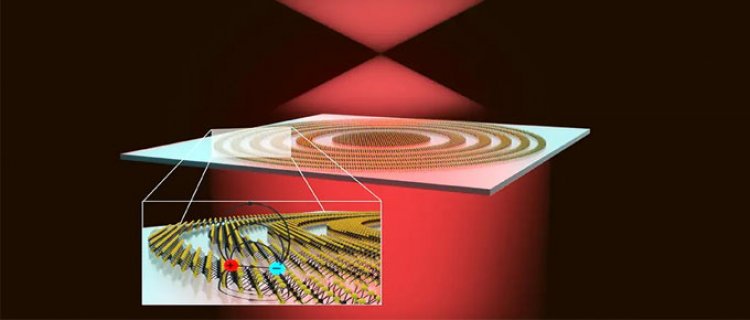Cutting-edge Materials: The World’s Thinnest Lens and Revolutionary Aerogels
In a groundbreaking development in optics and photonics, researchers have created the world's thinnest lens, measuring only three atoms thick.

World’s Thinnest Lens
In a groundbreaking development in optics and photonics, researchers have created the world's thinnest lens, measuring only three atoms thick. This ultrathin lens, crafted from a single layer of molybdenum disulfide (MoS₂), represents a significant advancement in nanotechnology and material science.
Details of the Development
- Material: Molybdenum disulfide (MoS₂), a two-dimensional material similar to graphene but with distinct optical properties.
- Thickness: Merely three atoms thick, translating to a few nanometers.
- Functionality: Despite its minimal thickness, the lens is capable of focusing light, a critical function for a lens. This achievement opens new possibilities for miniaturized optical devices, including smartphones, microscopes, and potentially even advanced wearable technologies (SciTechDaily).
Potential Applications
- Miniaturized Optics: The lens can be integrated into compact optical systems, reducing the size and weight of cameras and other imaging devices.
- Wearable Technology: Its thinness and lightness make it ideal for applications in augmented reality (AR) and virtual reality (VR) devices, where reducing bulk is crucial.
- Microscopy: Enhancing the capabilities of microscopes, allowing for higher resolution imaging at a nanoscale level.
Revolutionary Aerogels
In another notable advancement, researchers have developed new aerogels designed to significantly improve electronic device safety by efficiently dissipating heat. These aerogels, known for their low density and high porosity, have been engineered to address the growing thermal management challenges in modern electronics.
Key Features
- Composition: The aerogels are made from a network of nanoscale materials that can withstand high temperatures and effectively conduct heat away from critical components.
- Heat Dissipation: The innovative structure allows for rapid thermal conductivity, preventing overheating and potential damage to electronic devices.
- Durability: These aerogels are not only efficient but also durable, maintaining their structure and performance under various conditions (SciTechDaily).
Implications for Electronics
- Enhanced Safety: By preventing overheating, these aerogels can extend the lifespan of electronic devices and improve user safety.
- Performance Boost: Efficient heat management allows for higher performance in devices such as smartphones, laptops, and other consumer electronics.
- Broad Applications: Beyond consumer electronics, these aerogels could be used in industrial applications, including aerospace, automotive, and high-performance computing, where heat management is critical.
Conclusion
These two developments signify a leap forward in materials science. The ultrathin lens made from molybdenum disulfide could revolutionize the field of optics, enabling the creation of highly compact and efficient optical devices. Simultaneously, the innovative aerogels promise to enhance the thermal management of electronic devices, ensuring better performance and safety. Together, these advancements highlight the potential of cutting-edge materials to transform technology and improve everyday life.






















